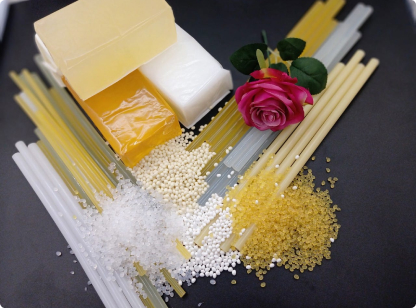🔥 Hot Melt Adhesives: A Versatile Bonding Solution
- Introduction
- Definition: Hot melt adhesives (HMAs) are thermoplastic materials applied in a molten state and solidify upon cooling to form a strong bond.
- Key Feature: No solvents or water — bonding occurs through heat and pressure.
- Composition
- Base Polymers: Common types include:
- Ethylene Vinyl Acetate (EVA)
- Polyolefins
- Polyamides
- Polyurethanes
- Additives: Tackifiers, plasticizers, stabilizers, and waxes to modify performance2.
- Application Process
- Heating: Adhesive is melted using glue guns or industrial applicators.
- Dispensing: Applied to surfaces while hot.
- Bonding: Materials are pressed together; adhesive cools and hardens quickly.
- Advantages
- ✅ Fast setting time
- ✅ No drying or curing required
- ✅ Excellent adhesion to a variety of substrates
- ✅ Environmentally friendly (no VOCs)
- ✅ Cost-effective and easy to use
- Common Uses
- 📦 Packaging (carton sealing, labeling)
- 🚗 Automotive (interior trim, filters)
- 📱 Electronics (assembly, wire tacking)
- 👟 Footwear and textiles
- 📚 Bookbinding
- Limitations
- ❌ Not ideal for high-temperature environments
- ❌ Limited chemical resistance
- ❌ May require surface preparation for optimal bonding
- Innovations & Trends
- Development of pressure-sensitive hot melts
- Use of bio-based polymers for sustainability
- Enhanced formulations for temperature resistance and flexibility2
- Conclusion
Hot melt adhesives offer a fast, clean, and reliable bonding method across industries. Their adaptability and eco-friendly nature make them a go-to choice for modern manufacturing and packaging.
